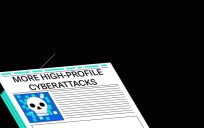(Written by Caron Calrson of FierceCIO.com)
The State of Utah recently reduced its server count from 1800 to 400, and its IT department from 1000 to 800 employees through a comprehensive consolidation initiative. Operations costs were cut by $4 million, and the employee reductions were achieved entirely through managed attrition. In an interview with FierceCIO, Utah’s CIO, Stephen Fletcher, discusses the consolidation effort, performance metrics and how the IT industry can help CIOs better serve their businesses.
FierceCIO: What information technologies are proving useful in helping Utah address budget challenges?
Stephen Fletcher: The obvious one for us is the area of server consolidation, virtualization and even database consolidation. We’ve saved a lot of money and helped balance the budget by going through that. If you’re able to consolidate not only hardware and software but also operations, personnel and energy, it provides more savings.
We have gone through a consolidation effort throughout our total IT organization. We had about 1000 IT employees when we started, and we’re at a little bit less than 800 now. We have retrained and redeployed some of those folks. We’ve taken a couple of COBOL programmers and made them Java programmers, which was a great success.
FC: What is your top priority over the coming year?
Fletcher: We’re trying to generate better performance metrics and collect that information so we can make more informed decisions. We’re putting things in place like service level agreements and cost of unit of support. I want to be able to tell the business side that it costs the state X number of dollars to provide the level of service it wants.
Citizens are waiting 10 minutes in a DMV line, for example, and it costs X dollars. If you’re not okay with 10 minutes, it will cost X additional dollars. What are the metrics that you want to hit, that your citizens want you to hit? We’re using business analytics and looking for data warehouses that we’re populating with the proper data. If you capture the data and manage it, you’ll influence the outcome.
FC: What issues should the IT industry be spending more time on to provide better tools for large enterprises?
Fletcher: IT ought to be focused on the business and [describe] products in terms of the tools we can use to help the business provide better services or reduce costs. Let’s say a state has a budget of $40 billion and its IT budget is $400 million. If you make the IT department more efficient by 10 percent, that means you’ll save $40 million. If you can make your business more efficient by figuring out better ways to do things–that’s part of where the real value is going to come in. The way to get the $4 billion in savings is to use IT tools, but you still have to change the way the business does things.
FC: What are the greatest security challenges for the enterprise network right now?
Fletcher: We have a million attacks a day on our systems, with people trying to get to some of our sensitive data. It’s an ongoing battle. You’ve got to test all of your applications and systems on a regular basis. The attacks are getting a lot more sophisticated, and a lot of the attackers would just as well assume you have no idea you’ve been breached.
States are kind of unique because half of their information they want to make available to everybody, and the other half of the information is very private. Since a lot of this information is located [in close proximity], you have to find ways to make sure you protect the sensitive information while giving good access to the rest. Part of it is making sure you’ve identified what data you have and putting the proper controls in place.
FC: Have IT shops relinquished too much power over the network to users these days?
Fletcher: Yes and no. What I think you’re seeing is a trend toward people raising their IT activities to an enterprise level. It’s more efficient if you make decisions at an enterprise level. In Utah, everybody has to go through me [for IT purchases]. We have strong legislation in place and strong support from our governor. There are agencies that would love to go out and contract separately though.
FC: Are the role and the responsibilities of the CIO reaching a point of stabilization, where there is a consensus about what is required?
Fletcher: You are seeing an elevation of the role to a strategic level, and I think you will see it stabilizing. There’s still some pressure to make it even more critical or involved than it currently is. CIOs can be a driver or a facilitator or just a consultant. Sometimes they have to be all of those things at once.
Related Articles:
Creative budget-cutting tactics from state CIOs: Part 1, Washington
Creative budget-cutting tactics from state CIOs: Part 2, Tennessee and Georgia
State CIOs urged to consider personal smartphones for work
Turning data into a business




Leave a Reply
You must be logged in to post a comment.